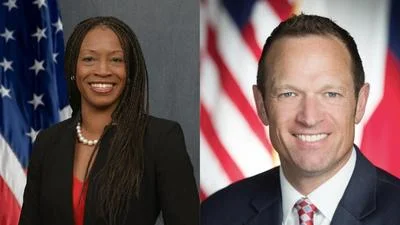Washington ‘urgently’ demands more authority to ‘save’ ‘vanishing’ habitat or species. No one asks if we really have a crisis. We don’t. While there are individual species or places that merit conservation, there is no biodiversity crisis in America. The real crisis is an expanding regulatory state and shrinking and shacked federal and private property. It’s an ever-constricting noose choking off and raising the price of things that make our lives possible: food, fiber, minerals and energy – the backbone of our existence and national security that comes from land.
What you don’t hear is that things have dramatically improved for the last century. We hit rock bottom around the turn of the prior century when most inefficiently eked out an existence on family farms and shot whatever threatened their crops, livestock, desired game species, or was perceived as threatening.
Most wildlife populations we have good data for have since exploded: black bear, mountain lion, bobcat, coyote, river otter, red fox, sea lions, alligators, antelope, elk, moose, big-horn sheep, musk-oxen, bison, white-tailed deer, beaver, armadillo, raccoon, opossum, turkey, snow geese and on and on. Many of these animals are big and require lots of habitat. Many are predators that need abundant prey. Some are so adaptable that they now live in greater densities around human development. As their numbers have exploded, many have expanded into places they had not been seen for a century. Generally, wildlife is doing great which means there is generally plenty of habitat.
Government at one level or another already owns about 36 percent of U.S. land, an area larger than the nation of India. Government has stretched regulatory tentacles onto the majority of the rest through the Endangered Species Act (ESA), wetlands, conservation easements or other laws, and desires even more like the call to set aside 30 percent (30x30) of the U.S.
Yet, government satellite data documents that only about 5 percent of the 48 contiguous states is developed with another 22.6 percent as pasture, hay and crops (where wildlife feasts to the tune of likely billions of dollars of damage every year). That leaves about 70 percent in generally natural landforms nevermind Alaska that is for practical purposes 99 percent in a natural state.
Meanwhile, federal agencies already abuse their bloated environmental powers. Elon Musk recently stated that federal officials compelled Space-X to conduct ridiculous analyses as to whether a rocket splashing down in the ocean might hit a shark. It’s theoretically possible but so what? Such absurd bureaucratic hoops are conjured through various federal laws with the nice-sounding ESA being the worst.
Countless bogus ‘endangered species’ are useful regulatory tools. The Iowa Pleistocene snail was listed because there were supposedly “probably fewer than 100” at a single site. A half century after listing, some 38 locations with potential habitat and at least one supporting an estimated at 200,000 snails have been identified, and one of the snail’s biggest threats is trampling by snail researchers. A federal plan calls for preserving snail habitat until the next ice age, and the government wants more ‘buffer’ land around already restricted habitat.
Other ‘endangered species’ number in the millions and did before bogusly designated as ‘endangered.’ Seldom are bogus endangered species delisted. The running buffalo clover which was, had supposedly been “one of the rarest” North American plants with just four individuals at a single site. Later surveys revealed 175 populations in 82 counties in six states with just one numbering 64,998. After Hoover’s woolly-star, another plant, was designated ‘threatened,’ more than 135 million were found!
Subsequently, these plants were proclaimed “recovered” as was a nocturnal lizard that had been listed based on day-time surveys. Of a paltry 62 species supposedly ‘recovered’ over the ESA’s half century on the books, most are mistakes. The never-ending crisis clamor is dishonest.
Beware: the demand for even more conservation laws is not about ‘saving.’ It is just Washington’s insatiable and dangerous desire for more control.
The author is an expert on conservation policy, having served as Senior Advisor at the USGS, Deputy Assistant Secretary at the Department of the Interior, Staff Director for the House Natural Resource Committee’s Subcommittee on Oversight and Investigations, a member of the Commonwealth of Virginia’s Board of Conservation and Recreation, and a principle or fellow at think tanks.









